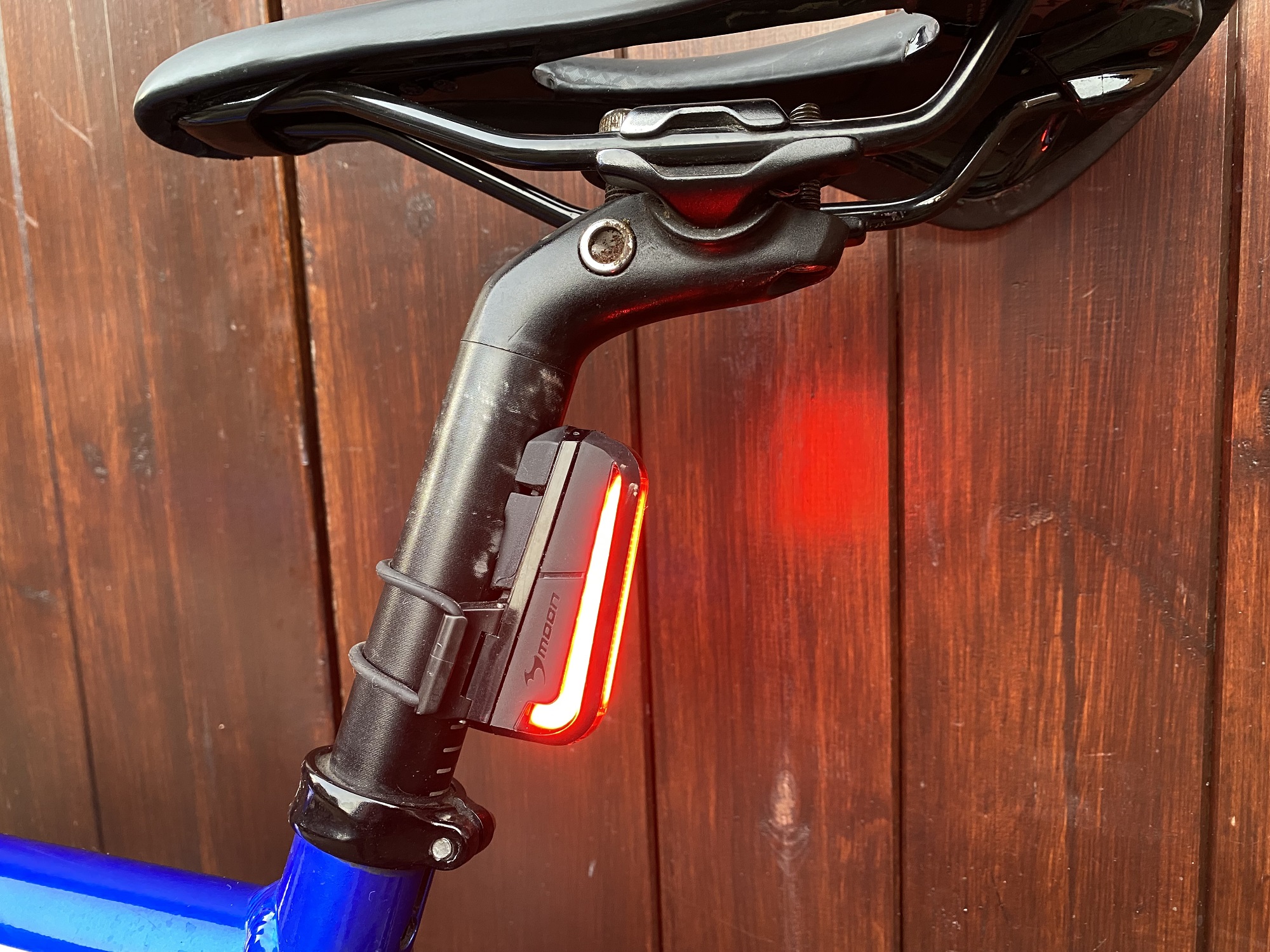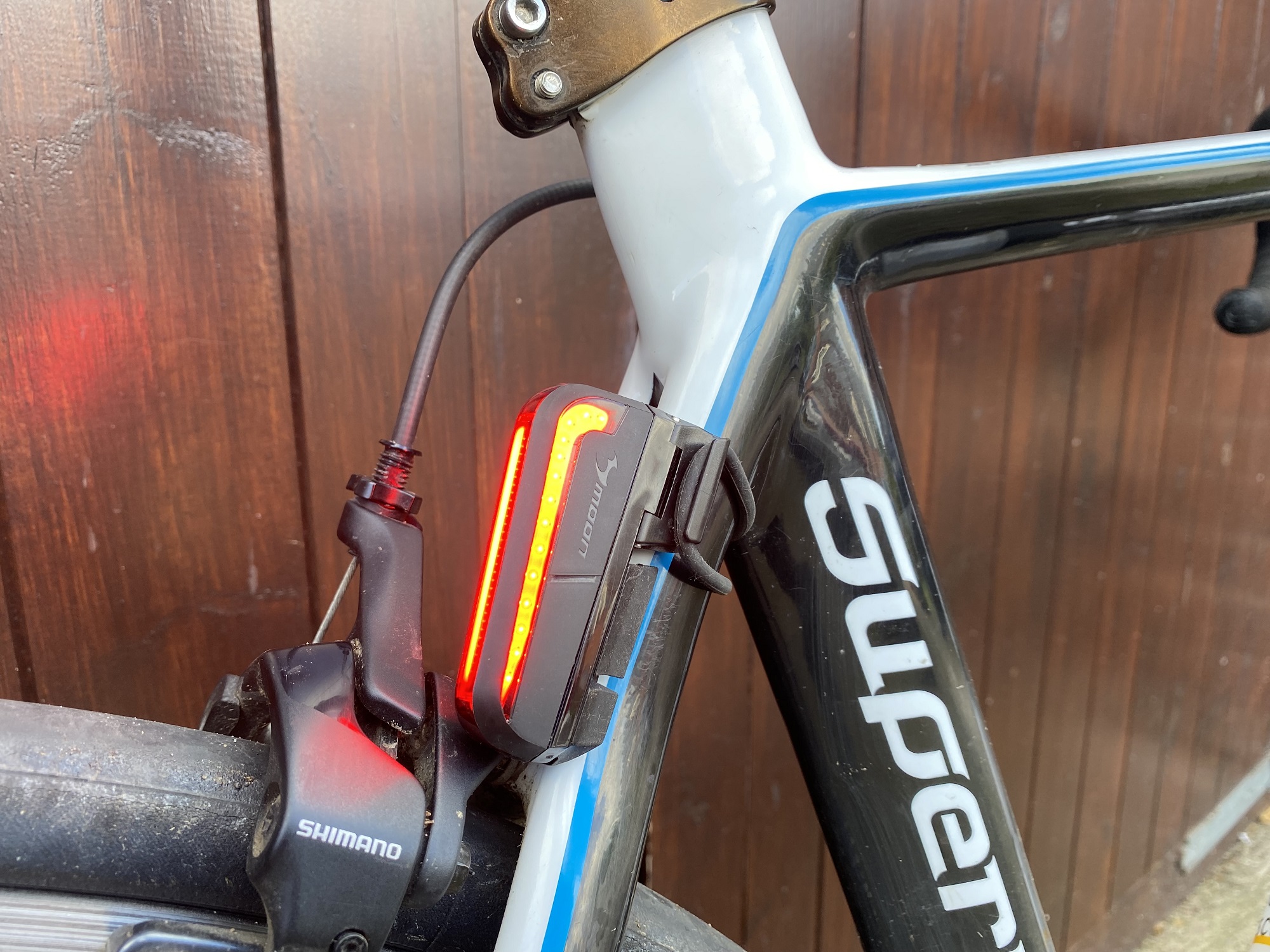Moon Cerberus rear light review – it's not perfect, but this classic model is still very good
Versatile rear light with excellent 270 degree visibility and decent run times, but room for improvement with the mounting system

If you are looking for a light to fit a variety of seat posts, the Cerberus might be worth considering. The versatile mounting system and 270º coverage sets it aside from many other lights, it’s no surprise it’s won design awards based on these aspects. It’s not perfect though; the hinged mounting wings could be better positioned to improve stability and the rubber pad could do with a permanent fixing to keep it attached to the light. These niggles aside, the light is certainly a slick unit that will get you seen day or night.
-
+
Excellent side and rear visibility
-
+
Versatile mount to fit any shape of post
-
+
Appropriate number of modes
-
+
VLS
-
-
Mount design could be improved to give a more secure attachment
-
-
Rubber pad easily detaches (so easy to lose)
-
-
Button not easy to locate
You can trust Cycling Weekly.
Moon’s Cerberus rear light has been around for a few years now. The innovative design was recognised when it launched in 2018 by Taipei Cycle d&i awards and again in 2019 by iF Design.
It certainly enhances visibility on the road, but is it still a worthwhile investment fours years on, with so much more competition from the best bike lights on the market?
Moon Cerberus rear light: construction
A built-in 500mAh Li-PO battery powers three LED COBs – two lateral units and a conventional rear-facing unit.
The compact unit measures just 18 x 27 x 64mm and tips the scales at 35g. The Cerberus is mounted by way of two hinged wings, a rubber pad and an o-ring. Three different sized O-rings are supplied: 20-26mm, 26-35mm, 35-52mm.
The rubber pad acts as a cover for the USB-C charging port and a short charging cable is supplied. The unit has an IPX7 rating.

Moon Cerberus rear light: mounting
The mounting system is possibly the most versatile I’ve come across. Two hinged wings ensure that the light fits any shape and size of seat post without compromise. The range of supplied o-rings allows you to mount on narrow frame tubing if space is tight.
For me, the hinged wings could be longer, or placed further down the unit to offer a more stable mount; they sit at one end leaving the other a little less secure. So, while it might be versatile, it's not as secure as it could be and this is a real let-down, in my opinion.
The latest race content, interviews, features, reviews and expert buying guides, direct to your inbox!
The shape of the light adds to its versatility. I’ve actually mounted it upside down on some bikes; depending on your seat post angle the beam may shine downwards rather than to the rear if mounted the 'right way up'.



Since the Cerberus doesn't come with a clip it can’t be hooked onto a rucksack. I've had it on a pannier rack (with the hinged wings flat) and a helmet. Off the bike, it's clearly not guaranteed to 'fit all'.


The rubber mounting pad isn't fixed in place, it sits atop three nipples on the back of the unit. The bung for the charging port also helps hold it in place. The pad can easily detach when you remove the light. A bit of strategically placed glue would prevent it from becoming detached and avoid you losing it, I can't say how it might affect the light or materials though!

The poorly placed hinged wings and free-to-move rubber pad have existed since the launch of the Cerberus, it’s a shame not to see them addressed by Moon. Using the smallest o-ring possible for the post you're attaching to helps reduce wobbles, while taking care when you remove the light will hopefully avoid loss of the pad.
Moon Cerberus rear light: the ride
The Cerberus has two buttons that sit plush to the unit, they're not the easiest to locate and/or operate, particularly with cold or gloved hands. This seems to be a trait of Moon lights, it makes for a neat looking unit but patience is certainly required to locate and operate them.

A short press switches on the light and you can access 5 different modes, all of which are customisable thanks to the Variable Lumen System. Like so many lights, getting used to how the Cerberus works is paramount to getting the best out of it. Once you’ve got to grips with it, it can genuinely cater for any kind of riding.
The main power button does everything you need to get riding:
· short press: turns light on/off and switches between modes for the selection (constant or flashing)
· double press: switches between constant and flashing selections.
· 8 second hold (with the light off): enables or disables the lock function.
The second button is primarily used to vary the lumens. A long press activates the VLS mode and ramps the output from minimum to maximum, just release it at the required setting.
All lumen settings can be restored by pressing both buttons simultaneously.
It’s nice not to be overwhelmed with modes. Moon have nailed this aspect with just two constant (high and low) and three flashing (1xday, 2xnight). Having them separated helps reduce scrolling too.
In terms of visibility, the Cerberus is great. Road users to your rear, left and right get a decent blast of light in all modes. From a great distance it's not as visible as some others, but it casts its beam far enough for you to feel safe.
Run times have been consistent and you can really squeeze hours out of it with the VLS; 18 hours in steady mode at the lowest setting, 100+ hours on day flash in the lowest setting. Even without adjusting the output you can get an impressive 19 hours on day flash (150 lumens). The 50 lumen steady mode gives a more modest 1 hour 45 with the VLS coming in useful here if you are planning a longer ride on a winter night.
The light operates a memory mode; switch it off in a particular mode and it'll be in the same mode when you switch it on again.
There’s also a 'lock' function so there's no danger of it accidentally switching on if you've dropped it into the bottom of a bag.
The USB-C has reliably charged inside 2 hours. There's a tiny LED on the side of the light that will glow a steady purple when the battery level is low.
Moon Cerberus rear light: value and conclusion
$46.99 / £35.99 gets you slick looking light with excellent visibility and an adaptable mounting system. However, four years since its launch, the Cerberus is no longer so unique; there are plenty of other lights offering side visibility now.
It stacks up well against the competition. The Lezyne Laser Drive rear comes in at $64.99 / £54.49 and boasts more lumens as well as laser-beam strips – which sounds flashy, but doesn't actually add too much to the experience or performance.
Similarly, the Knog Blinder R70 rear light costs $79.95 / £56.99 and does have some handy features, such as an integrated USB plug. But the price is a fair bit more than the Cerberus.
Over the years Moon has added a few extra lumens and a third o-ring to the Cerberus. The mount's lack of stability and security where the rubber pad is concerned, niggles that could easily be addressed by Moon, may leave it lagging behind the competition.
Moon Cerberus rear light: specs
- LED: 3 COB RED LEDS
- Max. Lumens: 150LM
- Max. Runtime: 120:00
- Batter Type: 500mAh Li-PO Built-in
- Recharge Time: 2 hrs
- Size (W x D x H): 18 x 27 x 64mm
- Weight: 35g
Emma’s first encounters with a bike were in between swimming and running. Soon after competing for GB in the World Age Group Triathlon Championships in Edmonton in 2001 she saw the light and decided to focus on cycling.
With a couple of half decent UK road seasons under her belt, she went out to Belgium to sample the racing there, spending two years with Lotto-Belisol Ladies team, racing alongside the likes of Sara Carrigan, Grace Verbeke, Rochelle Gilmore and Lizzie Deignan. Emma moved from Lotto-Belisol to Dutch team Redsun, working primarily as a domestique for Emma Johansson. When Redsun folded, Emma was offered the opportunity to ride with a newly formed Belgian team and home to the first year senior and budding rider Anna Van Der Breggen.
After retiring, Emma returned to teaching, setting up her own tutoring business. When not coercing kids to do maths, she is invariably out on two wheels. While the road bike remains her true passion, she has also developed an addiction to touring, with destinations including Iceland, Georgia and Albania, to mention just a few. There have also been sightings of Emma off-road, on mountain and gravel bikes… As if all of this isn't enough, she's been working as a freelancer since 2005, testing and reviewing the latest kit and sharing her insight into the sport.